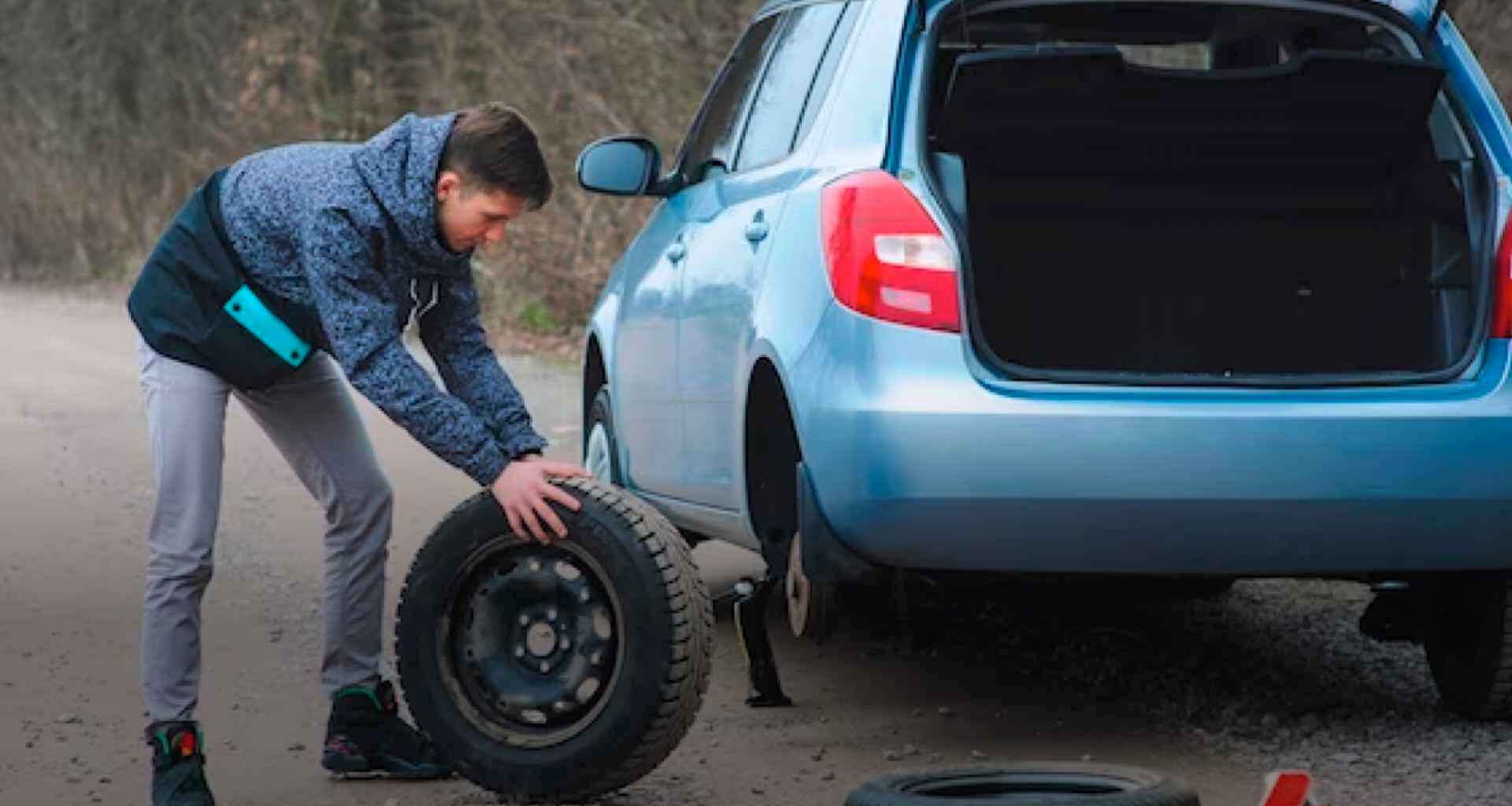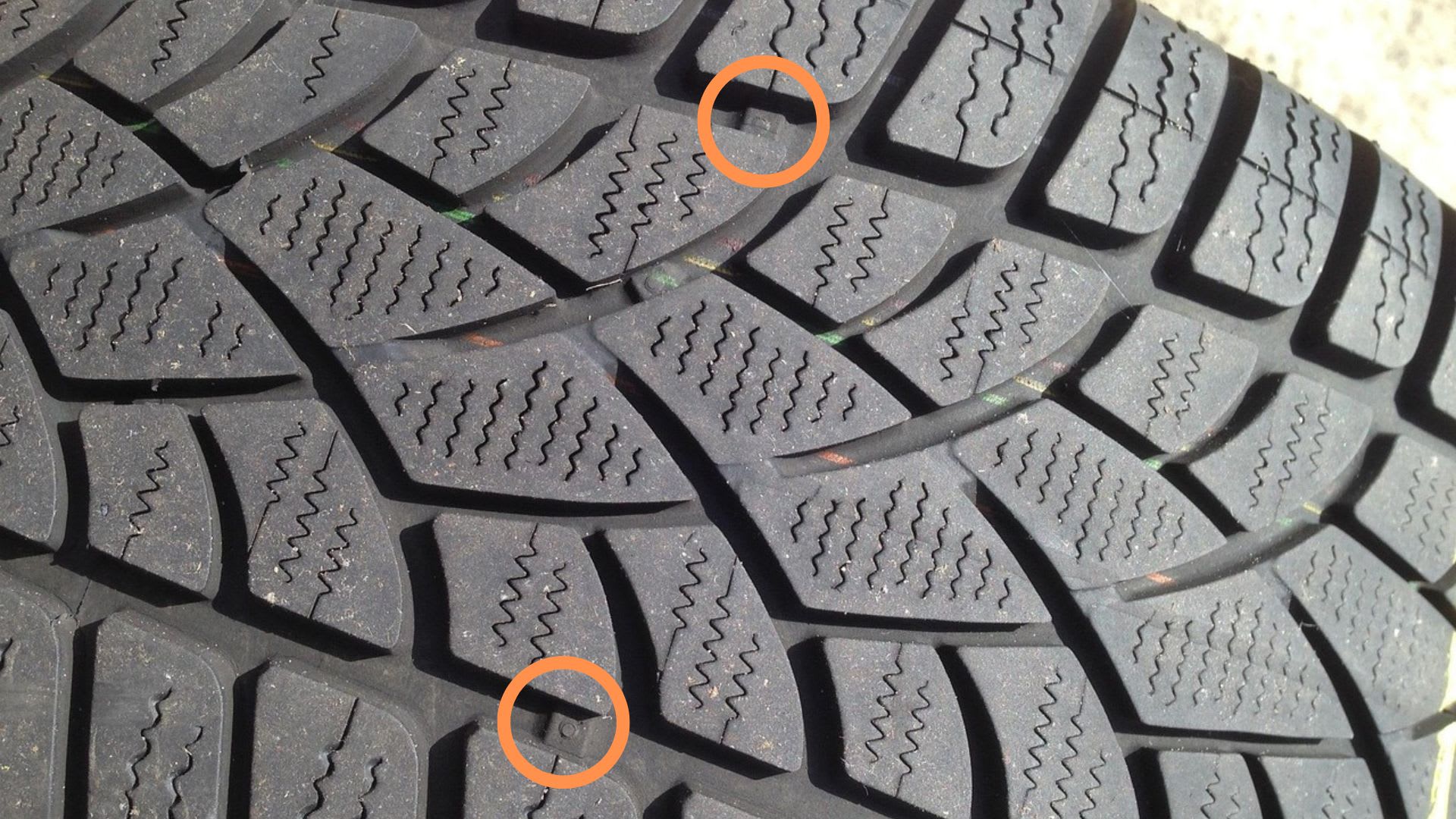Tire Maintenance & Safety
Free shipping
Best price guarantee
Special pricing
Financing with Resolve
Easy returns

Tires are the unsung heroes of our vehicles, quietly carrying us to our destinations day after day. However, these essential components have a limited lifespan and require regular attention to ensure optimal performance and safety.
Neglecting tire maintenance can lead to a host of problems, from decreased fuel efficiency to compromised handling and even dangerous blowouts. Knowing when to replace your tires is a critical aspect of responsible vehicle ownership.
In this article, we'll explore the key indicators that signal it's time for new tires, helping you stay safe on the road and get the most out of your investment.
When to Replace Tires?
Determining when to replace tires is crucial for maintaining your vehicle's safety and performance. Tires play a vital role in your car's handling, braking, and overall stability, making it essential to keep them in top condition.
Regularly checking your tires can help you avoid unexpected issues and potential hazards on the road. Worn-out tires can significantly increase stopping distances, reduce traction in wet conditions, and even lead to blowouts, putting you and other motorists at risk.
By understanding the signs that indicate it's time for new tires, you can proactively address the issue and ensure your vehicle remains safe and reliable. Remember, investing in quality tires and timely replacements is a small price to pay for the peace of mind and protection they provide.
How to Determine the Right Time
Identifying the optimal time for tire replacement relies on understanding several key factors. One of the most crucial indicators is tread depth. Tires with tread measuring less than 2/32 inches are insufficient for safe driving conditions. A simple method to check this is the penny test: place a penny into the tread groove—if the top of Lincoln's head is visible, it's time for new tires.
Another vital factor is the age of the tire. Even if tread appears intact, tires generally need replacing every 6 to 10 years due to the natural breakdown of rubber compounds, which can degrade performance. Check the tire's manufacture date on its sidewall to ensure it hasn't exceeded its recommended lifespan.
Visible damage should not be overlooked when assessing tire health. Examine tires for signs of cracks, punctures, or bulges. Such damage, although it may seem minor, can escalate into serious safety issues like loss of control. Regular inspections are key to catching potential problems early, ensuring your tires remain reliable and safe for all driving conditions. Keeping a close watch on these factors helps maintain your vehicle's performance and your safety on the road.
1. Check Tread Depth
Keeping an eye on tread depth is crucial for maintaining traction and ensuring safe driving conditions. Adequate tread helps your vehicle handle slippery surfaces and prevents skidding. For a precise measurement, a tread depth gauge can be used. The recommended minimum tread depth for optimal safety is 4/32 inches, especially for wet or snowy conditions. This ensures improved stopping power and vehicle control in adverse weather.
Regular tire assessments should include checking for uneven wear patterns across the tread. Discrepancies in wear can signal issues with tire alignment or inflation levels. If one side of the tire is noticeably more worn, it's wise to inspect for alignment or pressure discrepancies. Addressing these can extend tire life and enhance overall vehicle safety.
Incorporating these evaluations into your maintenance routine is simple and can prevent unexpected tire issues. Keeping tread depth within safe parameters ensures your vehicle is prepared to handle various road conditions with confidence and reliability.
2. Assess Tire Age
Evaluating the age of your tires is crucial for ensuring safety and performance. Over time, the materials in tires can deteriorate, leading to reduced effectiveness. Tires should be considered for replacement once they reach the 6 to 10-year milestone, irrespective of their tread condition, to avoid any potential risk of failure due to aging materials.
Identifying a tire's age involves examining the sidewall for the DOT number, which includes the week and year the tire was manufactured. This important detail helps drivers make informed decisions about tire replacement schedules. Keeping track of this information ensures that your tires remain within a safe usage period, minimizing the dangers associated with aging tires.
Beyond their recommended timeframe, tires may lose their pliability, affecting grip and ride comfort. Monitoring both the condition and age of your tires allows you to maintain safety standards and optimize the lifespan of your vehicle's tires, ensuring a more secure driving experience.
3. Inspect for Visible Damage
Conducting regular checks for visible damage on your tires is crucial for ensuring safety. Look out for irregularities like cracks, punctures, or bulges, as these can undermine the tire's structural integrity. Such issues often result from impacts with road hazards or can develop over time due to various environmental factors. Addressing these irregularities promptly is vital to avoid further complications.
While inspecting, focus on both the tread and sidewalls for any signs of distress. Embedded objects or visible cuts should be carefully assessed by a tire professional to determine the extent of the damage. Additionally, a bulge on the sidewall usually indicates internal damage, suggesting that the tire may be prone to sudden failure. Early detection and remediation of these issues can prevent major road incidents.
Integrating a thorough visual inspection into your regular vehicle maintenance routine helps extend tire life and improve performance. By staying attentive to tire conditions, you can significantly diminish the risk of unexpected tire failures, ensuring a smoother and safer driving experience.
4. Monitor Tire Performance

Keeping an eye on tire performance involves tuning in to the subtle indicators your vehicle provides. If you notice unusual vibrations, particularly at higher speeds, this might suggest an issue with tire balance or alignment. Such vibrations can lead to uneven wear and increased strain on your vehicle's components, potentially escalating into more severe mechanical problems if neglected.
Sound is another important signal of tire condition. Be attentive to any unusual noises, like humming or thumping, as these can indicate uneven wear or internal damage. Such sounds might also result from incorrect inflation or improper alignment. Addressing these auditory clues promptly can prevent further complications and ensure a smoother drive.
Handling anomalies, such as a tendency to drift to one side or sluggish steering response, may reflect tire issues. These symptoms could indicate uneven wear or inadequate tire pressure. Ensuring proper inflation and alignment can enhance handling and stability, contributing to a safer driving experience. Regularly monitoring these aspects of tire performance helps maintain their integrity and optimize vehicle functionality, ensuring reliability and safety on the road.
Final Thoughts
Diligent tire checks are essential for extending their lifespan and enhancing road safety. By routinely evaluating your tires, you can spot potential problems before they escalate. This preventative measure not only sustains peak performance but also minimizes the chances of unforeseen roadside incidents.
Replacing tires at the appropriate time is crucial for maintaining vehicle efficiency. Well-maintained tires play a significant role in ensuring smooth handling, optimal fuel efficiency, and a comfortable ride. Keeping an eye on tire health ensures they meet your vehicle's demands effectively, enhancing both safety and the driving experience.
Integrating these practices into your regular vehicle upkeep provides assurance and lasting advantages. By prioritizing tire care and addressing replacements as needed, you protect not just your investment but also the safety of all road users.
Prioritizing tire maintenance is a simple yet effective way to ensure your vehicle's safety, performance, and longevity. By following this quick checklist, you can confidently assess when it's time for new tires and make informed decisions about replacements. When you're ready to shop for tires online and find the best deals, we're here to help you at SimpleTire.
A tire replacement could generally take anywhere from 45 minutes to 1 hour. It is advisable to go to an expert to get your tires replaced, however, if you are replacing the tires on your own, it can take anywhere from 1 hour to 2 hours.
You can replace your tires at a professional shop or at home. SimpleTire has thousands of tire shops all over the country to help you with your tire needs. You can shop for your tires at SimpleTire and get them delivered to the shop of your preference to get your tires replaced.
Ready to find the perfect tires?
Search By